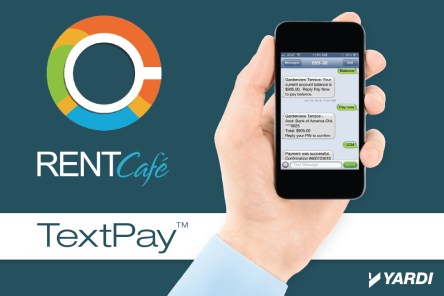The tech-savvy members of Gen Z are no strangers to browsing and shopping online. As a generation with high expectations, ratings and reviews are a large part of their online buying process. But just having ratings and reviews isn’t enough to win their business. You have to be strategic if you want to stand out from the competition. REACH by RentCafe is digging into how Gen Zers use ratings and reviews. This information will help you figure out how to achieve glowing ratings from your young renters. Why are reviews important? Before jumping into how Gen Zers use ratings and reviews, it’s important to first understand just how essential this aspect of your business is. For one, reviews help potential customers gauge an item or service’s quality while simultaneously informing your business about what works and what could be done differently. Additionally, reviews improve your search rankings. Did you know that, without them, there’s no chance of showing up in the Google local pack? Lastly, and perhaps most importantly, reviews increase the likelihood of conversion, and isn’t that the goal of your digital marketing strategy? Ratings and reviews inspire customers to reach out to you, increasing the probability of them converting. RentCafe.com conducted a study of all the apartment search journeys that resulted in a lease and found that ratings and reviews were one of the top three features that lead to conversions. When you’re looking to draw in Gen Z renters, ratings and reviews are a critical part of the marketing process. How do Gen Zers use ratings and reviews? As part of a survey series with more than 10,000 Gen Z participants, 65% of Gen Zers say they consider ratings and reviews always or most of the time when searching online. This...
Gen Z
An important introduction
Step aside millennials, the largest generation ever is ready to rent. The oldest members of Gen Z will ring in their 25th birthdays this year, and this tech-savvy group is quickly becoming the fastest growing renter demographic. Coming of age in the era of smart phones and social media, Gen Zers are highly skilled and have even higher expectations compared to previous generations. By now, you probably know the basics about Gen Z, but as the up-and-coming generation of renters, it’s critical to dig deeper. To appeal to these “digital natives,” you must first understand their habits, values and lifestyles. Lucky for you, REACH by RentCafe is taking a closer look at Gen Z characteristics and will be sharing its research data with you in a series of infographics. But first, let’s understand who exactly these Gen Zers are. Gen Z’s top 3 characteristics Gen Z is made up of independent and entrepreneurial thinkersMost Gen Zers were raised by members of Gen X. As parents, Gen X tend to favor autonomy and entrepreneurialism, values they have passed on to their children. Members of Gen Z celebrate their independence and ability to express themselves, and they don’t have the perception that things will just go their way. They aspire to become leaders, and 41% plan to become entrepreneurs. More than others, this young generation seeks to create success instead of expecting it. Gen Z values diversity and societal changeWhile Gen Z is the largest generation yet — roughly amounting to 2.46 billion people in 2019 — it is also the most diverse. According to the Pew Research Center, in the US, 52% of Gen Zers are non-Hispanic white, 25% are Hispanic, 14% are Black, 6% are Asian and 5% are other.They’ve also experienced and embraced...
Renters’ Changing Preferences
One Year into the Pandemic
More than a year has passed since we first issued a survey to understand renters’ responses to the pandemic. A new survey reveals surprising ways that renters’ preferences have changed, and which preferences remain the same. What renters wanted The March 2020 renter survey issued by RentCafe.com gave analysts an understanding of renters’ expectations and concerns at the beginning quarantine in the U.S. About 45% of respondents had no concerns in particular. About 18% of renters were concerned if it was safe to move during that time, and 13% were concerned that they would not be able to pay rent in the near future. Concerns aside, 56% of renters were intent to move as scheduled. (About 18% had a lease that expired, and they needed to move.) Only 8% were postponing their move because of the pandemic and putting the selection process on hold. Of renters who were actively searching, 28% sought a unit that was cheaper than their current home. About 5% wanted a floorplan that facilitated roommates so that they could save money. What renters want now More than 10,600 people participated in the March 2021 survey. Survey questions aimed to reveal: how renters’ preferences had changed after a year of shelter-in-place practices their biggest concerns regarding their upcoming move how the pandemic impacted their rental selection More than 50% of renters listed the pandemic as a trigger in their decision to move. Many renters relocated to create a better financial outlook: the top reason for relocation was to save money. Nearly 30% of participants who are in the process of moving sought a better deal. A quarter of participants needed a change of scenery after several months in quarantine, but they didn’t seek a massive change. About 48% of renters preferred to remain in the same city. A noteworthy 90% of respondents sought long-term rentals, which could mean that even those seeking a change in scenery wanted a sense of stability. Others may simply want to lock in a lower rate for longer. Lifestyle improvements ranked third and fourth on renters’ lists. More than 20% of renters searched for open-air amenities and 20% desired more space. Safety less of a priority across the board, yet solo living is on the rise? Have renters relinquished their safety concerns? Concerns still linger, though they’re nearly half as prevalent as before. In 2020, 18% of renters were concerned about whether it was safe to move during a pandemic. Exactly 9% are currently concerned about safety. Last year, about 15% of renters were concerned about the hygiene standards of their community. This year, only about 9% listed hygiene as a concern. Interestingly, 4% of respondents were so concerned for health and safety that they sought to live alone in 2020. Fast-forward one year and that number has risen to 8%. So while trends suggest that health and safety are not as important to renters as they were last year, the amount of renters seeking solitude for safety has increased. Does the pandemic still influence renter relocation? Recent survey participants stated that the pandemic had little influence on whether they move now or later. About 67% of renters currently seeking an apartment are committed to relocating now. As before, necessity motivates most moves today. For 32% of respondents, one of their biggest concerns was if they would be able to pay their rent. Even more renters (34%) are seeking a cheaper unit now that their previous lease has ended. In short, more renters are relocating due to the effects of the virus rather than the virus itself. In 2020, a considerable amount of people relocated to avoid exposure. The 2021 survey suggests that an even larger chunk of people relocated due to lease expirations and the desire for greater financial savings during uncertain times. Learn more about what renters want on the RentCafe.com...
The Mobile Advantage
Resident Satisfaction with Mobile Apps
Your resident portal is a convenient and secure connection to your renters. While some renters like to access the resident portal via computer, studies show that most renters prefer to use a mobile app. If your current resident portal doesn’t offer a robust mobile option, you’re missing out on three key points for resident satisfaction. What renters want: convenience and efficiency with a mobile app According to the 2020 National Multifamily Housing Council (NMHC ) & Kingsley Apartment Resident Preferences Survey, community mobile apps are in high demand. Community apps permit a secure and mobile-ready way for users to access resident portals without using a web browser. Renters access mobile apps directly via smartphone or tablet, two devices that most of us always have within reach. In contrast, websites are best viewed via web browser on a laptop or desktop computer, which we don’t always have on hand. A community mobile app can promote renter satisfaction in three distinct ways. Mobile apps improve communication, task management, and daily operations for renters Residents prefer to communicate via mobile app more than conventional methods. About 60% of survey respondents prefer for leasing management to contact them via mobile app. Only 17% prefer contact through the website portal. On average, 64.5% of renters prefer to receive notifications through a mobile app. For example, 71.5% of renters want to receive mail and package notifications through the community mobile app. An app is also a preferred way to manage a household. On average, 58% of respondents prefer to pay rent via mobile app compared to only 23% who want to pay through the website portal. About 64% of renters want to submit maintenance requests via app. Even a formal event, like a lease renewal, is suitable for the app:...
A Sense of Community
Improving Renter Morale
Savvy property managers understand that a feeling of belonging created in a community of neighbors is priceless—especially for long-time renters—and can generate numerous benefits for residents and the property alike. From creating an inclusive living environment for everyone to improving retention, there are many positive aspects to be gained from one simple concept: a sense of community. But, how can you build a community from scratch, and incorporate new residents along the way? Observe the little things A strong community is easy to spot. People smile more, neighbors greet each other and are more open. This often reflects the way the premises are kept: the shared space is clean, and residents are more inclined to clean up after themselves or pick up litter to keep things orderly. Conversely, if people don’t seem to spend time in common areas, and there is visible trash or property damage, it could be a sign that the community needs some TLC. Get a different (social) perspective The secret to a low renter turnover has an emotional dimension. Creating bonds and fostering a sense of camaraderie between renters and property management—as well as among renters themselves—is often overlooked. It all boils down to promoting the social side of the apartment community instead of seeing just the business side. Seeing your property as more than just a physical space is a good start to put yourself in the renter’s shoes and understand why a sense of belonging weighs so heavily for many people. Always remember to ask for feedback and act on it accordingly. Keep in touch digitally Bulletin boards and community fliers are fine, but today’s renters need more than that to feel welcomed and wanted in a community. The answer to creating easy community engagement is simple: go...
Renters Speak Out
Canadian Tenant Survey
If you’re currently a renter or have ever been one, you’ve probably wondered whether or not your landlord considers your needs for a happier home. A recent survey of thousands of Canadian renters sent a clear message to property managers everywhere: from soundproof walls to high speed internet and online services, renters are expecting more from their apartment living experience. And perhaps not surprisingly, technology tops the list. Sponsored by Yardi, results of this year’s Tenants Preference Survey, the only survey of its kind for the Canadian market, were presented at the Canadian Apartment Investment Conference (CAIC) on September 6, 2017. The CAIC brings together property owners, managers, investors and developers to provide valuable insights into the residential real estate market including how to increase net values. This year, attendees were eager to hear about what renters really want and how to keep them happy. Birth of the Project According to Sarah Segal, director at Informa, the survey was inspired five years ago by a real estate roundtable discussion that raised questions about what renters wanted. Informa delivers over 150 trade and consumer exhibitions annually across the globe including the Canadian Apartment Investment Conference, and engages industry leaders to understand key trends and concerns impacting property owners and managers. With more digital tools to empower its research in 2016, Informa partnered with Rentlogic and worked with founder Yale Fox and Amy Erixon from Avison Young to conduct a small survey of 2,000 renters. Segal said the survey produced some interesting findings, but Informa wanted wider distribution and more targeted questions for the next survey. To accomplish that, the company sought industry support including sponsors and the participation of property managers. Segal commented, “Yardi was immediately onboard with helping us produce an in-depth renter survey and...
Targeted Marketing
Means quality leads
If your digital marketing campaigns simply generate leads, they are underperforming. Create campaigns that attract the highest quality leads and provide insights into tenant habits with a single business intelligence tool. Yardi Orion® Business Intelligence (BI) is a mobile-ready platform with more than 200 built-in key performance indicators. The software offers flexible reports and dashboards. The data gathered by Orion BI provides insightful, configurable reports that can be used by multiple tiers of leadership. Marketers can use Orion BI to identify lead sources for the highest quality renters: demographics that can reduce occupancy, minimize delinquencies, and promote lease renewals in one swoop. Orion BI highlights the cost per lease, showing users how many marketing dollars went into each conversion. Of the leases signed, renter behavior is then tracked. The data reveals which marketing sources attracted the most renters who paid their rent on time and which renters renewed their leases. Let’s say that your property ran ads on RentCafe.com, Apartments.com, and Forrent.com for one year. You wanted to know which of those sites resulted in the lowest cost per lease and the highest renewal rate. You could configure the parameters of your report to show those data sets. Upon discovering that RentCafe.com offered the highest quality renters, your marketing team would concentrate its resources towards that site. Your organization nixed marketing dollars on lead sources that underperformed. Orion BI can even help to fill specific types of vacancies. If your property has issues filling its studio units, you can create a report that shows which lead sources attracted renters who signed studio leases. You can also avoid lead sources where most renters seek out larger spaces. For more information on how Orion BI informs marketing decisions, join a...
Smart Renters
Want Smart Energy
Rising utility costs are a growing concern for renters. A recent report by Freddie Mac suggests that increasing utility costs concern renters more than rising rents—and renters are willing to pay higher rents for greener units. Forbes reports that the price of every energy commodity included in its index declined in the double digits since 2013. Electricity was the only exception with a decline of 0.4 percent. Energy costs are lower yet residents receive higher bills even when demand and usage have not increased. The changes are so alarming that concerns over rising utility costs now outweigh worries over rising rents. The “Profile of Today’s Renter” by Freddie Mac reveals that 70 percent of respondents are moderately to greatly concerned about higher utility bills. More than 60 percent share the same level of concern about potential rent increases. Utilities and rents are neck-in-neck when renters consider the impact on their budgets. Of participants, 74 percent report that higher utility bills will have a great impact or some impact on their household finances. In comparison, 78 percent express similar views about higher rents. What may come as a surprise is that 47 percent of renters are willing to pay higher rents for a unit that promotes energy conservation. Of those surveyed, 88 percent say that green multifamily properties will help to reduce their utility expenses. But that’s not the only reason why renters will invest more in a green apartment. The perceived and actual value of sustainable properties extends beyond renters’ utility bills. A remarkable 84 percent of renters believe that multifamily properties that invest in sustainable features are “better places to live.” For many, energy conservation is a logical, ethical, and moral preference. Yardi Smart Energy Suite for multifamily properties addresses renters’ concerns by...
Millennial Renters
6 Ways to Attract Them
“The Millennials are coming, the Millennials are coming!” We’ve all heard some version of this over the last few years, but now they’re here and ready to rent. Are your properties positioned to get their attention? Here are six simple ways to attract more Millennials to your vacant properties. Learn how you can help them find, like, and trust you, so they will take the next step to becoming residents. Be found on mobile. According to Google, more searches now take place on mobile devices than on computers, and 87% of Millennials always have their smartphones handy – day or night. That means if you want today’s young renters to move in, they need to be able to find you when they’re searching on their phones. Is your property website optimized for viewing on mobile devices? If not, you’re missing out on valuable prospects and possibly not even ranking in search engines at all. Display accurate information instantly. Don’t waste anyone’s time by making your unit availability or prices hard to find. Millennials may be online often, but they’re in a huge hurry! Google tells us that while mobile sessions are increasing, time spent per site visit has decreased 18% in the last year alone. If searchers can’t quickly find the answers they need about your property, they’ll move on, rather than spend more time digging for information. Save yourself extra hassle (and data entry hours) by using online property management software that automatically and accurately updates your internet listings for you on multiple ILS sites. Use great photos. Don’t use outdated or blurry photos on your website, and definitely avoid stock photography whenever possible. Millennials are photo-savvy, thanks to their smartphones and photo-sharing sites like Instagram and Snapchat. They expect to see authentic...
Bridging Generations
Senior and Millennial Housing
A camera pans across the room, revealing the usual suspects – senior residents grouped around small tables, some in wheelchairs, creating a typical scene playing out in senior living facilities across the world. And then, the unexpected…a young man enters, sitting down to share cakes and conversation. At that moment, it becomes clear – this is not your typical “old folks home.” Finland, like many industrialized nations throughout the world, is facing a severe housing problem. According to estimates, in Helsinki 90,000 renters are competing for approximately 60,000 units. This gap in availability has resulted in a brutal housing market, severely affecting young adults trying to move out and live independently. Ranked as the 16th most expensive city in the world, Helsinki is facing rapid population growth and ever-rising housing costs – leaving the city’s youth vulnerable to homelessness. “It’s a very expensive city to live in,” 23-year-old kindergarten teacher Emil Bostrom recently explained to CNN. “If you manage to get an apartment that the city owns, it can be quite affordable. But the amount of applicants for those apartments is so high that the waiting list takes forever.” “Youth homelessness is the sum of many parts, and there is no simple solution,” Finnish Youth Housing Association Secretary General Minna Vierikko declares. “It is essential that different actors join their forces and start seeking alternative models to solve the problem of youth homelessness. For Miki Mielonen, Homes That Fit provides a simple solution. Homes That Fit invites Finnish millennials to cohabitate with Helsinki senior citizens as part of a pilot program run by City of Helsinki’s Youth Department, Design Driven City, the non-profit rental housing company Alkuasunnot, and the national youth housing association Nuorisoasuntoliitto. In exchange for socializing with elderly residents, 25 eligible participants...
Online Payment Essentials
NMHC Survey
The newest National Multifamily Housing Council (NMHC) survey offers dozens of helpful insights. The gathered data reflects 120,000 responses from 44 markets nationwide. Though the survey covers everything from home features to community amenities, we found one action item that can save you time, money, and headache: make online payments essential. Of those surveyed, 78 percent of renters prefer to pay rent online. If you aren’t offering online payments, your property instantly poses an inconvenience to renters. By offering online payments, you are reaching renters in a place where they spend much of their time. Pew Research Center data states that nearly 75 percent of Americans are online daily. Of that amount, more than 50 percent connect multiple times a day and 21 percent are on their mobile devices “almost constantly.” Online payment processing is a value-added convenience for renters. It allows them to automate payments, avoid late fees, and skip the hassle of ordering, paying for, and writing checks. Since so many Americans are already paying their bills online and through apps, the option to pay online becomes an expectation rather than a novelty. Online payments are also a great way to cut costs. InfoTrends analyzed costs associated with online billing versus paper billing. Electronic bill delivery and online payments averages $0.32 each, compared to paper-based bill delivery and payment at $0.76 each. Receiving online payments come with additional benefits. Rent payments are sent directly to the property bank account. There is no risk of a lost or stolen check. You can also minimize human error associated with check processing, such as a check sitting on an agent’s desk for weeks. Online payment processing simply makes sense for all involved parties. Below are a few tips to make property-wide adaption a breeze. Make It Feasible Be sure that your residents can take advantage of mobile services by providing fast, consistent internet coverage. They can’t pay online if they can’t get online. While speedy internet is great for making online payments, it’s also a must-have amenity for your property. NMHC reports that “mobile is king with 91 percent of apartment renters using a mobile phone.” The report also states that “53 percent of residents tested connectivity during their apartment tour.” It’s worth adding that 98 percent or renters state that good reception is important. Make It Effortless Adapt a user-friendly online portal. Yardi® RentCafe® makes it easy by integrating payment processing amidst other renter-friendly features. Renters can pay rent online, submit maintenance requests, and get updates on the community blog. Make It Known Do your renters know that they can pay online? There are several ways that you can highlight this service. Encourage them to opt in when signing or renewing a lease. Kick off each month with a post on social media reminding tenants to pay their rent online. Most renters will throw away a flyer in their mailbox. They will, however, take notice of a note attached to their parcel. NMHC reports that the average apartment community receives about 100 packages each week. These renters already express an interest in paying for services and products online. This is targeted marketing at its best! Print little reminders about the online payment option and them to renters’ packages. When the owners pick up their packages, they will also pick up a reminder to pay the rent online. Include a link to your online payment portal on your electronic newsletters. If you have a drop box for payments, mount a flyer about online payments near the box. When tenants drop of their checks, they are frequently reminded that there is a more convenient way to make payments. What methods have helped to boost online payment adaptation in your...
RentCafe TextPay
Pay Rent Via Text
Yardi’s RENTCafé TextPayTM feature is the most recent addition to the software’s mobile payment functionalities, reducing delinquencies by giving users another convenient option to make rent payments on schedule. Residents opt into the service through the property’s resident portal, then set up the account from which payments will be deducted. Whenever they’d like to make a payment, residents can text “pay now” to a short code and then verify the payment. A confirmation marks the completed transaction. The TextPay service is free for residents and property managers as part of the RENTCafé resident services package. The mobile feature helps to decrease delinquencies by giving residents yet another option to conveniently make a payment: those who enjoy face-to-face interactions can still pay in person; those with steady fund availability can schedule a reoccurring payment online; and now those who desire the greatest degree of flexibility can pay through the app or via text. Robert Sang, Technical Project Leader, Programming with Yardi, believes that it’s the convenience of text-to-pay that makes the tool so effective. “The capability of making a payment from your mobile device at any time is appealing,” says Sang. “These features offer the residents a new comfort level when making payments by eliminating the need for a computer or check.” By offering a variety of payment options, property managers can help residents work around the barriers that hindered on-time payments. Limited leasing office hours, a lack of checks, no stamps, federal holidays—those delays are a thing of the past. Online portals and mobile payments make settling balances simple and convenient. Everyone stands to benefit. “Does it decrease delinquency? Absolutely,” confirms Sang. “I will tell you that we see greater through traffic in our resident services application between the 25th – 5th of the month....
What Renters Want
Military Housing Edition
Builders, market analysts, corporate bloggers—everyone wants to know what renters want in order to earn their business. For residents of military housing, the list goes beyond granite counter tops and a great community pool. Military families have unique concerns that create a tall order to fill for builders of new military housing. It’s an even bigger challenge for those who hope to make existing properties more appealing. Properties that manage to supply what military families want, however, will enjoy happy and cooperative tenants for years to come. Proximity to a Major Airport Proximity to a major airport makes flight arrangements and travel times more convenient for service members. Nearby airports also make travel easier for visiting family members and friends. “Sitting on a plane for 16 hours feels worse when you have to drive several hours to get home afterwards. We have a few smaller airports nearby but the flights are more expensive and inconsistent.” Jerrod M. (Fort Benning) Built-in Storage “Small closets, small dressers—with a family, there is rarely enough storage for seasonal items, sports equipment and stuff. We end up buying dressers. Then we have to sell them or give them away when we move. It’s a waste of time and money,” says Laura B. (Austin) Improved Security When a family member is away in service, the last thing he or she needs to worry about is the safety of family members back home. Kristin F. opted to live in a civilian neighborhood because of its safer reputation, “We have had our homes broken into in our last two duty stations and lost many irreplaceable and valuable items.” (Southern Pines) Proximity to Entertainment Wherever there are young adults, there is a need for entertainment. Young adults crave interactive activities and places to...
Apartments’ Impact
New economic study
The results of a study published Tuesday, jointly funded by the National Apartment Association and National Multi-Housing Council, offer one of the most comprehensive looks to date at the size and scope of the nation’s multifamily industry, and the economic impact of its 35 million residents. The survey was conducted by Stephen S. Fuller, Ph.D., George Mason University Center for Regional Analysis. The numbers are impressive, illuminating how many residual benefits can be attributed to apartment renting. The findings in the study are validation of the construction and development patterns observed by walkable urbanism researcher Chris Leinberger. Renters want urban apartments with services and amenities within easy reach. As he told us last week: “Any list of walkable metro areas that are doing well is also the list of best performing real estate markets.” The survey looks at major metros Atlanta, Boston, Chicago, Dallas, Denver, Houston, Los Angeles, Miami, New York, Philadelphia, Seattle and Washington, D.C. in detail as to how apartments contribute to their economies. To see state-by-state breakdowns on the number of apartment residents, apartment homes, jobs supported and contribution to statewide economy, visit the Apartments: We Live Here interactive infographic. Though new construction gets a lot of attention, especially post-recession, don’t overlook the economic boost provided by ongoing maintenance of existing apartment homes. According to Fuller: “Often overlooked as an economic contributor, the industry spent $68 billion operating and maintaining the nation’s 19.3 million apartment homes in 2011 alone. That’s 4.5 times the amount spent on multifamily construction,” he wrote. And as more apartment communities are constructed to meet growing renter demands, those numbers are only going up. Here’s a quick look at some of the highlights from the study. Today: 34.6 million: number of apartment residents in the United States...
Talking to the Rentennials...
Eschewing home buying
Oh, those hard-to-pin-down, picky renters and their hearts’ desires. Every year, major research and development dollars are spent by trade associations and independent companies to try to figure out what will make renters choose one property over others, pay more rent for certain amenities, and stay on as long term residents. What’s being most closely scrutinized is the predilections of the “Millennial” apartment renters – the kids of Baby Boomers, ranging in age from recent high school grads to those in their early 30s – who are expected to favor renting over home ownership. As a result, some have changed their generational label to the “Rentennials.” Is it accurate? A recent National Association of Home Builders (NAHB) panel that looked at these trends expects these renters to want urban-proximate multifamily housing, with easy access to efficient public transportation as well as walkable neighborhoods, for ease of commuting and lifestyle convenience. NAHB is betting that the Rentennial trend will be a source of income for their industry in the years to come. We decided to take this research one step further and ask a group of Millennials/Rentennials how they feel about renting, home ownership, and what they want in their “ideal” apartment building. Here’s what they said. The perfect apartment? According to the NAHB, it’s the location of a property that will be the pivotal factor in attracting most renters, who dislike traveling long distances to their jobs. This insight is accurate, according to the young renters we heard from. And it’s also true that renters today want convenient public transportation access and walkable neighborhoods. “It’s all about the lifestyle for today’s renters. They want the urban experience of less commute time and immediate access to various activities,” said Jeff Kayce, vice president at Bozzuto...















